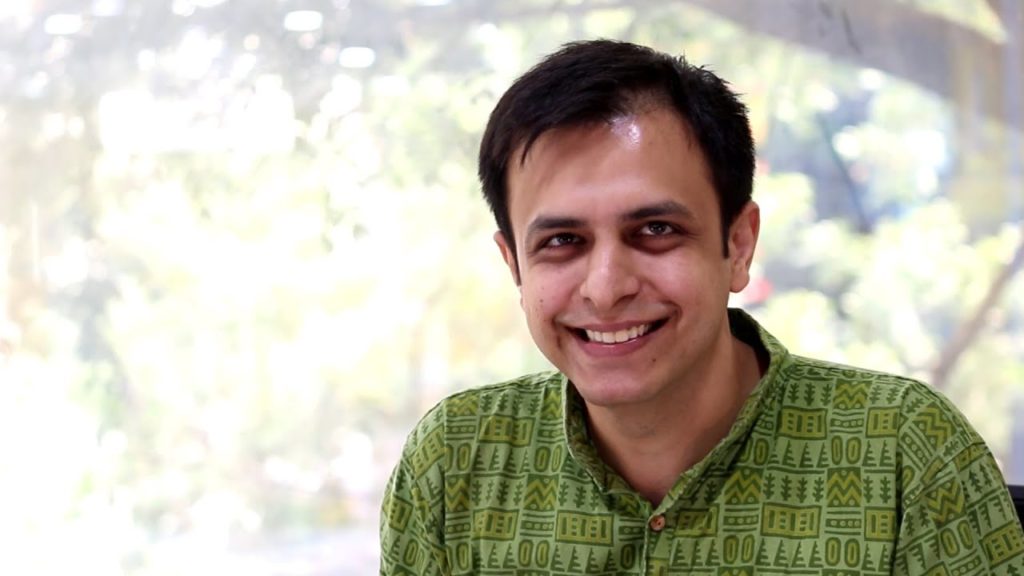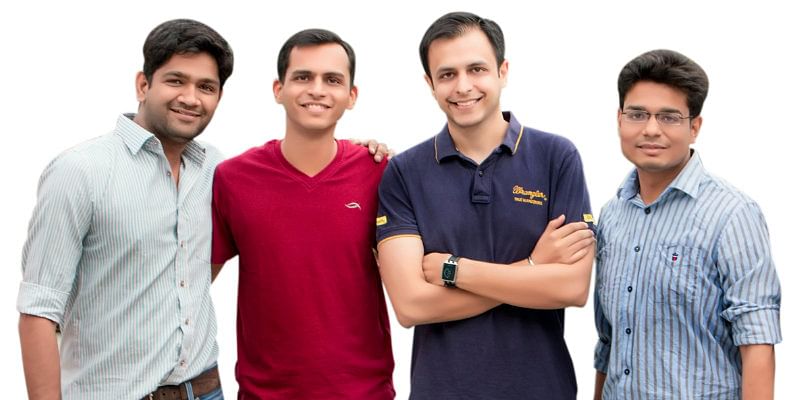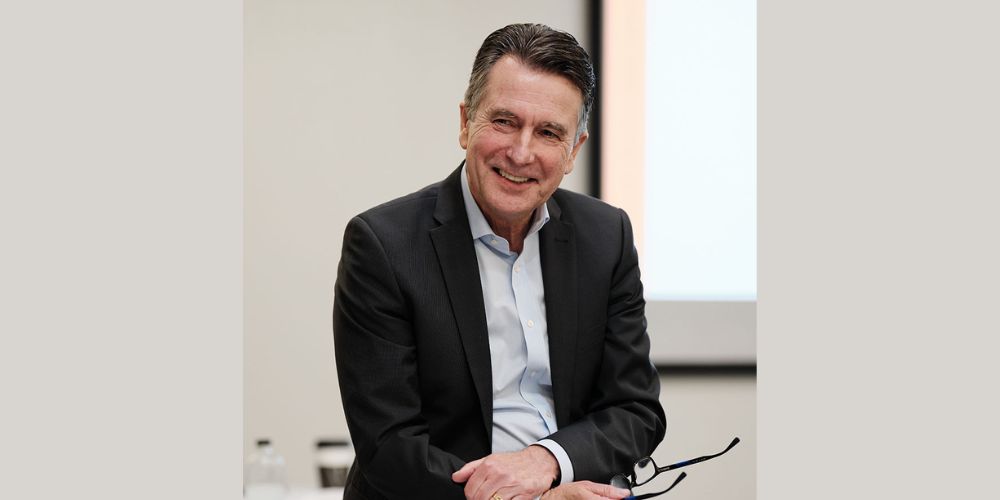Raj Girn: My guest is an India-based mathematician and coder Manan Khurma, who is the founder of a leading online math, learning and coding company called Cuemath, available to grade school students in 20 countries worldwide, including the US, Canada, the UK and, of course, India. The company has taught over 200,000 students worldwide and just recently secured a $40 million US investment round.
Here is Part Two of our conversation:

Raj Girn: This is the other thing, right, that a lot of people are scared to go into business, that if I have a clear plan and I’ve got all the metrics and all the other pieces in place, but something that I just didn’t anticipate doesn’t go the right way. How do you problem solve something like that? I mean, what have you done that we can share with people out there who are scared of the point of perceived failure or the point where they kind of pivot the game a bit?
Manan Khurma: I think firstly, no matter how carefully thought out your plan is, it will always go out the window once you actually start building the business. And that is the number one thing that entrepreneurs should keep in mind, that nothing will go to plan and that they almost like an axiom that you can take as you start the company. The mindset that you need to have is a very fast kind of mindset that okay, we have a north star, that’s clear to us. That’s the direction that we need to head towards. We are in this vast sea and that’s the only thing that will help us navigate. So we always have to keep course. But on a day-to-day basis, everything will change and very, very fast.
There’s this famous saying in the start-up world that building a start-up is like jumping off a cliff and building a plane on the way down, which is actually true. Every day you have to think what is not working. And you have to realign and recalibrate towards the north star. I think that is the mindset that any entrepreneur needs to have, which is very fast iteration, very quick towards the north star and problem solving on the way, you know building a plane on the way down. If you are in the mindset that you lay out a perfect plan from day one and everything will go according to plan, that’s not going to happen. So if you like certainty and if you like everything to be black and white, that’s never going to pan out.
These are such wise words, guys. So what I got out of what Manan just said there is that your end goal, like your nirvana, what you’re promising is going to be where this company is headed, that being your north star needs to stay very clear. But your journey towards that goal needs to be nimble, needs to be flexible, needs to be iteratable.
And I think that’s the key here, folks, is, being very clear on what your company’s vision and mission is. But then the road to getting there is something that you need to constantly keep working at to ensure that you don’t lose sight of where you’re going because you feel that the journey is taking you elsewhere. And I find that a lot of founders also make that mistake is that they get so caught up in the process and the journey part of it that they lose sight of where they were actually initially supposed to be headed. I feel it’s kind of like stay focused on where that is and all the other stuff from here to there is what can change and what should be allowed to change, if anything. You want to add to that?
Yeah, I think as entrepreneurs you have this unique ability to have a 30,000 feet point of view and few feet a point of view. And what I mean by that is, one technique that often helps is every day or every few days, you must take time out and step back and reflect on whether the overall journey is headed in the right direction or not. Because on a day-to-day basis, an entrepreneur has this tendency to get lost in the nitty gritty of the business. It’s entirely possible, as you say, that you lose sight of the north star.
So it’s just like any expert navigator, every few days you reflect and you see are we still aligned with the north star or not. And the north star should be clear to not just you but if you’re building a team, then everyone in your team as well so that everyone’s work is adding up to the same direction. So absolutely you need to have both that high level point of view and that very, very close to the ground point of view and you need to balance the two.
“You must take time out and step back and reflect on whether the overall journey is headed in the right direction or not. Because on a day-to-day basis, an entrepreneur has this tendency to get lost in the nitty gritty of the business.” ~Manan Khurma
Absolutely. Incredible words right there. Anyone that is planning on going into the world of start-ups, these are the types of things that you really want to sit and think about. And I feel it really is a mindset game at this stage. I feel that being a start-up founder really requires you to constantly be evaluating what you’re doing, why you’re doing it and where you’re headed. And a big part of that is the mindset game that we have within ourselves. That needs to be very clear.
And I think that’s what Manan is saying here, that every few days you’ve got to kind of sit with that and make sure that everything is aligned with what it is that you’re trying to accomplish. And if it’s not, that’s the time that you want to sit there and think, why not? So let me ask you this. In 2018, Cuemath went on a bit of a interesting journey. You launched an online class platform. What was the point of differentiation that made Cuemath online teaching portal the choice for parents for their grade school kids? Can you share that?
Sure. At the end of 2017, we had expanded quite a bit across India and our curriculum had started becoming more and more widely known. And what we realized was that we were getting a lot of demand from parents for the Cuemath program, from places where teachers were not physically present. For example, from some smaller cities and towns in India, but also outside India, especially from the US and Canada and some European countries.
So at that point, we decided, hey, you know, we have to enable our teachers to teach math, not just in their physical centers, but to kids anywhere across the world. And that’s the point when we realized the global ambition of Cuemath as a global brand. This is how we could do it by enabling our teachers to teach anywhere across the world. But one thing that I was very clear from day one was that we have to build an online platform that works exactly the same like our offline classes. It’s very easy to do online classes. You take a Zoom connection and the teacher and the student connect over that and the teacher starts teaching.

But in our classes, even in our offline classes and our online classes, the teaching approach is very different. You know, there’s a special reason we are called Cuemath. The word cue has a special meaning. It’s basically how teachers teach. Their style of teaching is not about directly lecturing or telling the kids what the answer is, what the next step is. The teacher will always be giving the student small cues basically. But the students is expected to discover the final answer on their own. So we wanted to make sure that our online platform also kind of enables the same methodology of teaching that we were doing in our classes.
So we started building this in 2018 and again, I took that approach of co-creation. I was the first teacher on this online platform. As this was being built, I was running classes. It took us almost two years to get it right. But by the end of 2019, I was confident that the platform would sell and now we can start scaling it. And that’s what we started doing. And then in the beginning of 2020, is when COVID started. And back then, still a lot of our business was offline classes and online was still just coming up. But at that point, we basically transitioned that entire user base, all our teachers and all our students across the world, to the online platform. And since then, the online classes have been the model.
Absolutely. It’s the most scalable model. Right?
Yeah.
So let’s let’s touch upon that a little bit before we move on, Manan. In 2019, Cuemath grew to a staggering 5,000 tutors. I want to ask you about that. A lot of people that go into founding a business fear the scale game, they fear how quickly or slowly should they be actually scaling. Now, Cuemath went within a matter of four short years from 100 tutors to 5,000. What do you feel people need to know in regards to scaling that you feel will help them get it right?
I think there’s only one guardrail here, and that is even as you’re expanding your unit economics have to work, which basically means that on every unit transaction on your platform — for Uber it will be the ride between the driver and the rider, for Airbnb it will the booking of the property and so on. In our case it’s the class and so on. It’s getting the student to take a class. So for any business, if the unit economics are positive, which means that if X is the amount of money you pay to get a consumer, and Y is the amount of money you get from the consumer when the time is spent on the platform, then Y should always be significantly larger than X. The output should always be significantly more than input. Otherwise why are you running a business.
“For any business, if the unit economics are positive, which means that if X is the amount of money you pay to get a consumer, and Y is the amount of money you get from the consumer when the time is spent on the platform, then Y should always be significantly larger than X. The output should always be significantly more than input. Otherwise why are you running a business.” ~Manan Khurma
So if that is true and if that continues to be true, even as you scale, then you can scale at whatever pace the market allows. If the unit economics guardrails are in place, then generally faster scaling is better scaling because you can do a multitude of . . . and other people follow you and venture capitalists follow you and so on. But if your unit economics are not working and if you’re spending more money on acquiring the unit than you’ll ever make on the unit, then you need to go slower. You need to fix your product. You need to fix your acquisition channels, how you’re acquiring it. And then only after that do you start scaling again. So at different points in your journey, you have to hit the brakes at some point and say, okay, this is not working. This channel is not working. Let’s rework this and let’s see what would be more sustainable. So unit economics is the absolute target. But within that, if you can scale faster, you should be faster.
That sounds great. Now, you got it right there, folks. You heard it from the master himself who has done it in a very short span of time, but has done it very on purpose. And that’s the other thing. We keep going back to the same kind of structure. And if you look at the story of any successful founder, you’ll see that their journey has been very similar to the journey that Manan has been on with Cuemath. I want to ask you this, because this is the other part that a lot of founders don’t factor in and that are kind of the changes to the infrastructure to support the scale. So with you having scaled pretty fast, what was some of the infrastructure changes that you needed to make in order to ensure that when you scaled up the rate that you did, that you were able to support that?
Yeah, I think it’s almost like everything went through almost like a complete reiteration every year or so in our journey. And this is something that we prepared for. So when we started the scale journey, we were using very simple systems in terms of managing the consumers, like Excel sheets and so on. But as we started scaling, we had to bring in more automation. We had to bring in smarter ways of managing our consumers and our data. On the online platform the order of magnitude, change in complexity was far higher.
We had to make sure that if there are 20,000 students taking classes at the same time, then all of the connections are working properly. So we had to expand our server capacity and all of these things. But as I said, this is again one of those things where it’s process. So, for example, for a new entrepreneur starting up today, you cannot start solving by thinking, okay, I’ll hit this scale in three years. You have to solve for today. You have to make sure that today what your consumer needs is being met. And as the consumer base grows, you keep revisiting infrastructure and making it more and more scalable. So this is one of those things, the constant recalibration towards the appropriate scale that you’re at at that point.

Absolutely. So basically, the growth of the scale needs to be supported and growing. Also the infrastructure to support that and constantly be evaluating if they are both kind of at par. I think that’s kind of something that I’m getting from what you’re saying here.
I want to touch upon a part of your company that we haven’t talked about yet. And that is the coding aspect of it. You launched coding in 2019. And I love the multi-revenue business model. I’ve always been a huge fan of that because I’m one of those founders that’s way too scared to put all my ducks in one row. I always look at, okay, if this isn’t going to get me where I need to, do, I have two or three other things that can kind of pull me up so I can kind of get to where I need to. So I want to ask you this. Why coding and why at this stage of your company’s growth, which was 2019 that you kind of focused on, then why add a new thing when you’ve already got a good thing going, I guess is kind of the overarching question here?
Yeah, I think for us the deeper reason was that we see coding as very connected to math. We see at the heart of coding is mathematical thinking. When you write a program and you write an algorithm, it’s all about the mathematical thinking behind it, how you’re sequencing the steps, how you’re ordering them and so on. So all good programmers are at their core mathematical thinkers. So we see coding as not different from math.
In fact our coding program has a very strong math component at its core, which is one of the reasons why our coding program is fairly different from other programs out there. So to give a simple example, if you have to design a video game, a two dimensional video game, where you have to play with battleships and so on. Now each position, the position of each object on the screen is specified by two coordinates, X and Y coordinates.
That’s a math concept. So doing such an activity helps the kid not only program but also understand the math of coordinates behind it. So we have a lot of these activities where kids program but they use math concepts that is code that not only help them learn coding but also then become better mathematical thinkers. So we think that math, coding and data science, this is the trinity, so to say, of the skills that you need the most at this point. So data science is also something that we’re building and we will soon come up with a program where children learn that.
Sounds incredible. You know, you’re setting up the future leaders to be able to be self-sufficient. This is what I’m hearing right now, because these are basic business requirements for anyone that is looking to go into business. You have to have a proof of concept.
You need to understand how everything fits together, that there needs to be the ability of knowing that somebody actually values what it is you’re creating, that they would want to pay money for it and then being able to kind of diversify what you’re doing. I mean, you’ve got mathematics to coding and now you’re going into the the data game to which I absolutely love. And I kind of get why all these are connected. And it’s great because to be able to come to one place where all of these dots, someone’s telling you how they connect, that you can get it all in one place is really good. Because there’s also this idea behind when you learn something, there’s a culture associated with that learning process is to be able to stay in one place and be able to learn multiple aspects of this journey I feel is very, very powerful stuff.
Yeah, exactly.
And I want to ask you. You already touched upon it. When the pandemic hit, obviously going online and going full bore and going international just made sense because the demand obviously became so much more heightened at the beginning of this year. You went into another round, you raised $40 million US. I want to ask you at this point, what were you looking to accomplish with that raise? Let’s talk about that phase of things now.
Yeah, so one was clearly just expanding to more countries and building on a stronger brand in each country. In the US, for example some investments were required just to open up our operations in more states and to make sure we had the right kind of team to support those operations. And so one was that component. The other component was making sure that our curriculum, as we go to these dozens of countries around the world, every . . . While the core of math and the core of coding is the same across countries, but you still have different curriculum contexts. So, for example, in the US you have Common Core in a majority of the states and in some states they have their own variations. In Canada, some states will follow some specific guidelines, in the UK they follow DCSC in Singapore and Singapore Math and so on.
So we had to make sure that our curriculum had that local contextualization done before we started expanding to these countries. I think the third set of investments was just to make sure that as we get an even wider variety of students on the platform, before going internationally we were still dealing with students in India. But when you open it up to international, to the international audience, you get students from even a wider variety, a wider spectrum. And you have to make sure that your curriculum is personalized, has the ability to personalize and adapt students unique need at each point. And that requires significant deep technology work, it requires adaptability, personalization and tools that we have to make up our platform. So it’s all these things put together, because if you have the ambition to reach millions of students, you better have the ability to deliver in a million different ways. So it’s it’s a complex job.
“If you have the ambition to reach millions of students, you better have the ability to deliver in a million different ways.” ~Manan Khurma
Absolutely.
And and then on top of that, you’re dealing with this whole math phobia. You’re dealing with this thing that math is a demon and math is not for me. And you have to convince first time students and first time parents that there is a different way to learn. There is a way to learn math that you’ll just fall in love with it so please come and at least try it.
You know, I wish I had this when I was young because the one subject that I always ran from was mathematics. And honestly because of the fear of just not understanding the concepts that were being taught, that were being taught one way for everyone. And I think that’s the key takeaway here, folks, when it comes to comes to Cuemath is that although this is a very international company, they have a very individualistic approach and even a geocentric approach to ensuring that wherever you’re at, whatever your ideology is, however you learn, that they have the way to help you move forward and move past a lot of the kind of traditional fears that we have about learning.
I think that’s the other thing I’ve really gotten out of this conversation with you, Manan, is that there are many different ways to learn something. And it looks like from our discussions that Cuemath is really kind of focused on making sure that they understand what those different ways are, that people learn and to collaborate more of a customization, even though this is a scale model. Fascinating.
Yeah, you’re trying to hit scale at one end and then you’re trying to solve for one person on the other side. So it’s a very interesting problem to solve. I also think it’s the holy grail of education that you can build a system that can adapt to each person’s unique need.
I absolutely agree with everything that you just said there. So as we get ready to close out, I want to ask you just so we can kind of round things up for everyone, what are the top five things the new founders need to know about how to build a scalable business out of a passion project?

I think the first thing that I tell a lot of my would-be entrepreneurs who ask this question is that it will take you the same amount of time and effort to build a $1 million business, a $10 million business, a $100 million business, a $1 billion business. You will be spending the next few years of your life working on some idea so choose a canvas that’s as large as possible. Don’t limit the problem space. For example, we are aiming to win the $20 billion global math market. That’s ambitious and that’s a huge gamble. So every new entrepreneur should think about this.
The problem that you’re solving, the solution, the product, the service, does it have a large enough market or not? Because if their idea is to build a scalable business, then the target market better be as large as possible. The second thing is, as I said earlier in my legislation, that it won’t be an easy journey. It’ll have its share of ups and downs. So it better be an area that you’re passionate about. You’re not jumping on to it just because there’s this wave going on. So these days, for example, tech is very hot so lots of start-ups think they can enter that space. But you have to be really passionate about the problem because every day of the week you’re up and you have to kind of do the same thing.
The third thing is to have that mindset that no plan is perfect. You have to jump off a cliff and build a plane on the way down. And I think the fourth thing is just be very, very clear about business fundamentals. So, for example, there’s a reason why MBA students get this better, because they actually train for this. But even if you don’t have an MBA, you have to take the effort to make sure you understand what is customer acquisition cost? What is lifetime value? What are all these basic business fundamentals that will basically be the levers of your business? And I think the first thing is choose your team wisely and choose your team carefully.
It’s almost like you’re going to be spending more time with them than with your own family as you build a start-up. So you have to have fun and you have to enjoy doing it with them. So make sure you’re very choosy, very selective about the folks you work with. And if you do these basic things, at least the journey will be fun. No one can guarantee the outcome but at least the journey will be exciting.
Absolutely. Manan I want to ask you, any final words that you’d like to leave everyone with? Perhaps something that I haven’t touched upon, that you’d like people to know or that you’d like to leave them with.
I think building a business is very exciting, and if someone does have a passion for something that people will be willing to pay for, it’s definitely worth a shot. A lot of people don’t take that risk because they think they’ll end up wasting two or three years of their life. But the upside is so huge of building a business of your own. The only way to get really wealthy is to own a piece of a business. You can never become truly wealthy just selling your time. You have to build a business or you have to own a part of a business. So my final kind of thought would be everyone should think about it. It’s not a necessity. But if you are passionate about something and if it is something that has a scalable kind of market, you should definitely consider building a business.
“I think building a business is very exciting, and if someone does have a passion for something that people will be willing to pay for, it’s definitely worth a shot.” ~Manan Khurma
Oh my god you said something there that I just want to make sure people heard. Don’t sell your time, own your time. That is the statement that I want to leave all of you guys with. It’s so powerful. And I think it’s indicative of the journey that Manan has been on. I feel it’s indicative of the journey of any successful founder is that they actually understand what that means. What an absolute pleasure chatting with you and having the opportunity to pick your brain. For anyone out there who wants to find out more about Cuemath and also wants to kind of follow you and see what you’re all about. How can they get a hold of Cuemath? How can they get a hold of you?
They can definitely check out on our website, and I’m not very active on Twitter, but I am active on LinkedIn so they can get on LinkedIn. Or even just reach out on chat. And we’re on chat on all social handles on Facebook, on Instagram and so on. And we have an app as well in the app store, which parents can download and get the kids started on Cuemath.
That’s brilliant. So Cuemath on an app.
Yeah, you might find an app. So it’s a subset of the class experience, but it’s still gets you started with some basic stuff.
I love everything about this. I genuinely wish you an abundance of continued success with Cuemath, Manan, and may its graduates go on to solve humanity’s biggest problems. I really, really think that.
Thank you Raj. Thanks for the kind words and it was lovely chatting with you.
You too. Thank you so much for hanging out with Manan and myself today. Folks, I really hope that you got some real value from our discussion and that you understand the importance of being calculated when planning out every stage of your growth, but also being very nimble and flexible and allowing yourself to fall in order to understand that that fall is helping you fall forward. And that’s a whole other concept. It’s a concept that a lot of people talk about, but really understanding that is something that is going to be a part of your journey is important to really kind of be able to sit around. I feel that this also has a lot to do with this whole idea behind making sure that your mindset is on point.
Throughout this conversation with Manan, what I kept coming back to as he was talking was just the mindset with which he has gone through the journey of scaling a passion into a very viable international opportunity to change the world. I really do believe that. So if there’s anyone out there that would like to check out Cuemath and just follow Manan, you heard him tell you how to do that.
If you would like to subscribe to any of the trainings that I do, go check out The Open Chest Confidence Academy on YouTube. The show is also on podcast platforms everywhere. And I also encourage you to go sign up for free coaching newsletter at TheOpenChestConfidenceAcademy.com/newsletter. I really want to continue my mission to support you on your professional journey, to give you the knowledge and the action tools from experts like Manan so that you can really move with confidence through your life to your intended purpose. I want to leave you with that, guys, and I can’t wait to see you next week. Have a great rest of your week.












